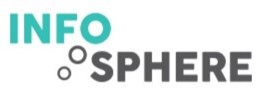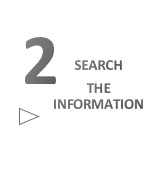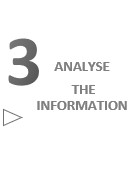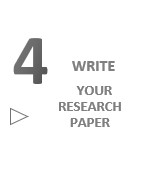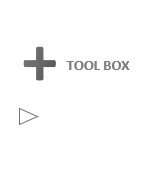Choose your topic
 Processing Request
Processing Request
Taking the time to clearly define your subject at the outset saves a lot when it comes to documentary research and note-taking. Several criteria must be considered when choosing your subject, not just your personal interest.
 Objective
Objective
-
Know the criteria for rationally choosing a research topic.
THE CHOICE OF SUBJECT
Various factors influence the choice of subject. Some are more personal, others are external like the time allocated and the documentation available.
Influencing factors
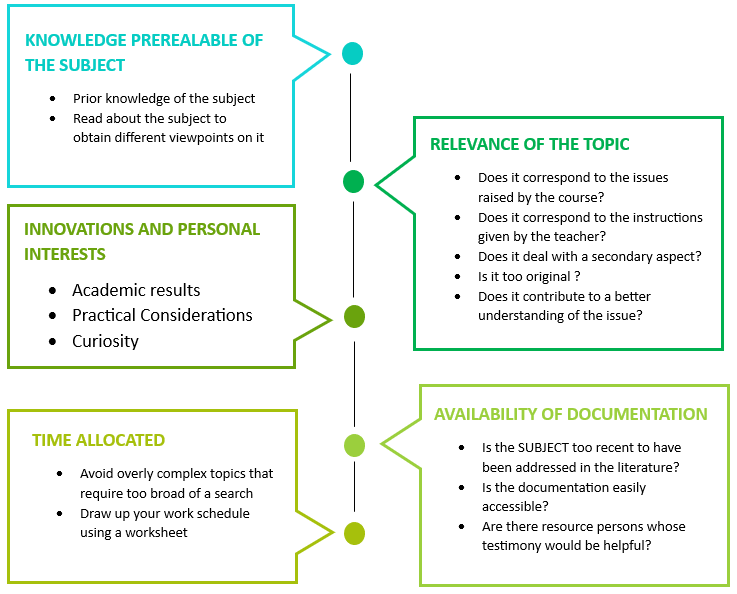

- By choosing your subject rationally, the work can easily be planned, thus saving time and avoiding mistakes.
Taking the time to clearly define your subject at the outset saves a lot when it comes to documentary research and note-taking. Several criteria must be considered when choosing your subject, not just your personal interest.
Infosphère / https://infosphere.uqam.ca
Being well organized is the key to delivering quality work on the required date.
 Objectives
Objectives
- Use a tool to plan the completion of your work.
SIMULATION OF A WORK SCHEDULE
Session work
|
STAGE |
ACTIVITIES |
APPROXIMATE TIME |
IF YOU HAVE 15 WEEKS… |
|---|---|---|---|
|
1 Prep work |
Choice of topic |
20% |
3 weeks (~14h) |
|
2 Information work |
Reading |
40% |
6 weeks (~28h) |
|
3 Writing work |
Plan |
40% |
6 weeks (~28h) |
![]()
There are also mobile planning applications on the web:
- iStudiez Proor Jorte calendar and why not try this tool from the Diapason website!
- You can also simply use a weekly planner like this:
 Worksheet Work Schedule.docx
Worksheet Work Schedule.docx
Infosphère / https://infosphere.uqam.ca
The flow of information is something that must be taken into account when preparing research on a current topic. Here is an example:
The Lac-Mégantic rail accident occurred on July 6, 2013 at 1:14 a.m.
An event occurs. Following this event, documents are created at different times to report the facts, analyze it and make an assessment of it. The resulting information over time may then be factual, subjective, technical or scientific.
A few minutes later...
At 1:58 a.m., the event was reported on Twitter and picked up the following hours elsewhere by the web, possibly on radio and TV.
|
Public |
Type of info |
Author |
Length |
Content |
Point of view |
Where to find? |
|---|---|---|---|---|---|---|
|
All audiences |
Descriptive |
Citizens and journalists |
50 to 2000 words |
Brief, instantaneous, fast |
Informative |
The following days:
The week following the Lac-Mégantic accident, 152 articles appeared in La Presse alone.
Ex.: Meunier, H. (2013, July 8). 6000 Méganticois, 6000 dramas. La Presse, p. A3
|
Public |
Type of info |
Author |
Length |
Content |
Point of view |
Where to find? |
|---|---|---|---|---|---|---|
|
All audiences |
Descriptive |
Journalists, some specialists |
50 to 2000 words |
Graphics, analysis, photo, opinion |
Somewhat neutral |
Log index. Ex: Eureka |
The following weeks:
Articles appear in popular periodicals of general interest.
E.g. Longchamps, R. (2013). Upper Hearts Lac-Mégantic, Tuesday, July 23, 2013. White Night, (132), 24-25.
|
Public |
Type of info |
Author |
Length |
Content |
Point of view |
Where to find? |
|---|---|---|---|---|---|---|
|
All audiences |
Current affairs, popular topics |
Journalists, writers |
250 to 5000 words |
Report, discussion, photo, opinion |
May be subjective: editorial |
Index of periodicals. Ex: Benchmark |
The following months:
Articles appear in academic and scholarly journals as well as reports. Conferences can be held on the subject.
Ex. : Champkin, J. (2013). A carriage full of curates. Significance, 10(5), 30-31.
Transportation Safety Board of Canada (TSB). (2013, March 11). TSB Engineering Laboratory Report. (LP148/2013). Gatineau: TSB.
|
Public |
Type of info |
Author |
Length |
Content |
Point of view |
Where to find? |
|---|---|---|---|---|---|---|
|
Researchers, specialists and students |
Search results, reflections |
Subject matter specialists |
2,500 to 10,000 words |
Detailed study, statistical analysis, graphs, bibliographic references |
Objective, neutral. Technical language |
Index of periodicals. Ex: Scopus |
Two years later...
Conference proceedings having been published in previous years, books and theses dealing with the subject appeared in the following years.
E.g. Beaupré, E. (2013). Lac-Mégantic: the images of tragedy, a story of unfailing solidarity. Montreal: Character.
|
Public |
Type of info |
Author |
Length |
Content |
Point of view |
Where to find? |
|---|---|---|---|---|---|---|
|
All audiences |
Analysis |
Subject matter specialists |
150 pages or more |
From general discussion to detailed analysis |
That of the author |
Research tools. Ex: Sofia |
Ten years later...
Knowledge and understanding of the event or topic is established. It is referred to in reference works such as encyclopedias.
E.g.: Wikipedia flags an article...
|
Public |
Type of info |
Author |
Length |
Content |
Point of view |
Where to find? |
|---|---|---|---|---|---|---|
|
All audiences |
Facts, overview |
Subject matter specialists |
1 to 10 pages |
State of knowledge |
Current point of view, objective |
Research tools. Ex: Sofia |
Infosphère / https://infosphere.uqam.ca
THE CYCLE OF SCIENTIFIC INFORMATION PRODUCTION
 RESEARCH IDEA
RESEARCH IDEA
Information not published at this stage.
- Definition of the problem and hypotheses
- Review of the writings produced
- Reflections on the idea
- Production of research data (e.g. laboratory notes)
![]() To access this information, you need to know the creator of it.
To access this information, you need to know the creator of it.
![]() INFORMAL COMMUNICATIONS
INFORMAL COMMUNICATIONS
Information not published at this stage.
- Discussion of the first results or conclusions with colleagues interested in the topic.
![]() To access this information, you must be part of this invisible college or try to integrate into this professional network.
To access this information, you must be part of this invisible college or try to integrate into this professional network.
![]() UNPUBLISHED LECTURES
UNPUBLISHED LECTURES
Information sometimes publicly available at this stage.
- Oral presentation only of research and initial findings at conferences in order to gather feedback from the scientific community.
![]() To access this information, you must attend the conference.
To access this information, you must attend the conference.
Sometimes speakers self-publish their manuscript on the Web. These documents do not yet have a "scientific" status since they are not validated by the scientific community.
![]() RESEARCH REPORTS
RESEARCH REPORTS
Information published outside the major distribution channels.
- This is called grey literature. It consists of preprints, reports, dissertations and theses.
![]() Information often available in institutional repositories or from organizations.
Information often available in institutional repositories or from organizations.
![]() ARTICLES
ARTICLES
Information published by an editor in conference proceedings or in peer-reviewed or non-peer-reviewed journals.
- Research results are deemed worthy enough to be presented to the scientific community.
![]() To access this information, you have to subscribe to the journals or get the records yourself if you have a lot of money) or through libraries.
To access this information, you have to subscribe to the journals or get the records yourself if you have a lot of money) or through libraries.
The open access movement makes a small portion of these publications freely available. Many search results fail to achieve this publication status.
![]() DOCUMENTARY DATABASES
DOCUMENTARY DATABASES
Information product developed by a publisher that lists articles.
- These products therefore allow the identification of articles although sometimes the full text may be there. Some databases are free like PubMed and ERIC but otherwise they are usually paid.
![]() To consult them, you pay a subscription yourself (if you have a lot of money) or you use the library.
To consult them, you pay a subscription yourself (if you have a lot of money) or you use the library.
If the search results are published in a secondary journal, the content of that review may not be reported in the searched database.
![]() BOOKS
BOOKS
Product published by a publisher.
- The scientific research that has become well established in articles ends up being described in books.
![]() You can buy the books or use the ones from the library.
You can buy the books or use the ones from the library.
The majority of search results will never be mentioned in books.
![]() REFERENCE WORKS
REFERENCE WORKS
Product published by a publisher.
- Standard vocabulary, best practices, state-of-the-art and major scientific consensus on a subject are condensed from articles and books into textbooks, handbooks and encyclopedias.
![]() You can buy the (often expensive) reference books or use the ones from the library.
You can buy the (often expensive) reference books or use the ones from the library.
A minority of research results will be large enough to be retrieved from reference works.
Infosphère / https://infosphere.uqam.ca
.png)
